When a hailstorm hits, your roof takes the brunt of nature’s fury, shielding your home from harm. But have you wondered how much damage it endures in the process? Hailstorms can wreak havoc on roofing materials, leading to costly repairs if not addressed promptly. This article dives deep into what you need to know about hail damage roof repair. From understanding the signs of damage to choosing the right contractor and taking preventative measures, we’ve got you covered.
Continue readingTag Archives: roof care
Preparing for Roof Leak Repairs: Everything You Need to Know
Roof leaks can be both an inconvenience and a major source of worry for homeowners. Left unchecked, they can lead to costly damages, not just to your roof but to the structural integrity of your home. Water damage can result in ruined ceilings, mold growth, and deterioration of walls and insulation, creating a cascade of problems over time. Addressing roof leaks promptly is not just a matter of convenience; it’s a critical step in safeguarding your home and preventing expensive repairs down the line.
This guide will walk you through identifying roof leaks, equipping yourself with the right tools, making temporary repairs, and understanding when to call in the pros for long-term solutions. Lastly, you’ll learn how preventative maintenance can save your roof from future problems.
Continue readingHow Long Should an Asphalt Shingle Roof Last?
When investing in roofing material, durability is top of mind for homeowners and property managers alike. Asphalt shingles are a popular roofing choice due to their affordability, versatility, and ease of installation. But how long can you expect them to last? While the average lifespan of an asphalt shingle roof is approximately 20-30 years, a multitude of factors can influence this range. This comprehensive guide will explore what affects asphalt shingle longevity, the different types of shingles and their expected lifespans, signs of wear and tear, and tips to extend your roof’s life.
Factors Affecting Asphalt Shingle Roof Lifespan

Several variables affect the lifespan of your roof, starting from the type of shingles you select to the environmental conditions they endure. One major factor is climate. Constant exposure to sun, rain, snow, and wind can significantly wear down a roof. For example, UV rays from prolonged sunlight can weaken the integrity of shingles, while heavy storms cause granule loss or even dislodge shingles altogether. Freezing and thawing cycles in colder climates can also expand and contract the shingles, leading to cracks over time.
Another important determinant is the quality of installation. Even the most durable shingles will fail prematurely without proper installation techniques. Effective ventilation and adequate underlayment prevent structural damage, moisture retention, and heat buildup, all of which could shorten your roof’s lifespan. Always hire experienced and certified roofers to ensure optimal performance.
Finally, maintenance plays a crucial role. Neglecting minor repairs can lead to major issues, such as leaks or rot, that compromise the overall structure. Simple preventive measures, such as cleaning debris from gutters or inspecting for damage after storms, can make a marked difference. While environmental factors may be out of your control, proper installation and consistent maintenance give your roof the best chance at hitting or even exceeding its expected longevity.
Types of Asphalt Shingles and Their Expected Lifespans
The type of asphalt shingles you choose will largely dictate how long your roof lasts. There are three primary categories of asphalt shingles, with each offering distinct lifespans and performance benefits.
Standard asphalt shingles, also known as three-tab shingles, are the most common and economical type. These shingles are lightweight and cost-effective but generally have the shortest lifespan, ranging between 15 and 20 years. Their thinner construction makes them suitable for moderate climates, though they may struggle in areas prone to severe weather.
Architectural shingles, also called dimensional shingles, offer a step up in both aesthetic appeal and durability. Their layered design gives them a more textured, three-dimensional appearance that mimics more expensive roofing materials like slate or cedar. With proper installation and maintenance, architectural shingles can last 25 to 30 years or more.
Lastly, there are premium asphalt shingles, which represent the pinnacle of quality in the asphalt category. These shingles are thicker, heavier, and better equipped to withstand extreme weather. Premium shingles often come with extended warranties and can last 30 to 50 years, making them an ideal choice for those seeking longevity and durability.
Choosing the right type of shingle for your needs depends on both your budget and your local climate. While architectural or premium shingles may require a higher upfront investment, their longer lifespans and better performance can save money in the long run by reducing replacement and repair costs.
Signs Your Asphalt Shingle Roof Needs Replacing
Over time, even the most well-maintained roof will begin to show signs of wear. Knowing when to replace your asphalt shingle roof is key to avoiding further damage to your home. One of the clearest warning signs is curling or buckling shingles. These deformations indicate that shingles are no longer tightly sealed, leaving your roof vulnerable to water penetration.
Missing shingles are another red flag. Whether caused by wind or aging adhesive strips, gaps in your roof leave underlying materials exposed to the elements, accelerating deterioration. Similarly, widespread granule loss is a telltale sign of aging shingles. If you notice excessive granules collecting in your gutters or downspouts, it may be time for a replacement.
Leaks and water stains inside your home should never be ignored. Moisture infiltration can lead to mold growth and structural damage, which are far more costly repairs than replacing a roof. Finally, if your roof is older than 20 years, it’s worth having it professionally inspected, even if there are no obvious problems. A proactive assessment can reveal hidden issues and help you plan for a timely replacement instead of dealing with an unexpected failure.
Maintenance Tips to Extend Your Roof’s Life
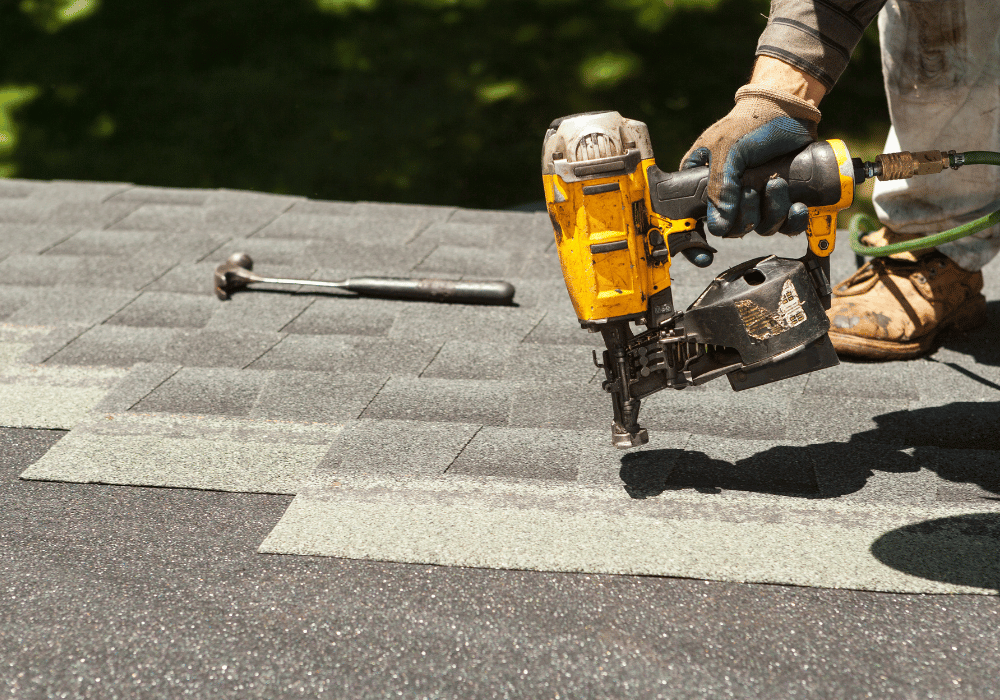
Maintaining an asphalt shingle roof doesn’t have to be an overwhelming task, but it does require consistency. Regular inspections are critical. Aim to check your roof at least twice a year, ideally in the spring and fall, as well as after major storms. Look for damaged, missing, or misaligned shingles, and address issues promptly to prevent more widespread problems.
Keeping your roof clean is another powerful way to extend its lifespan. Debris such as leaves, branches, and moss can trap moisture and lead to rot or algae growth. Use a broom or a low-pressure washer to remove debris periodically, and consider installing zinc or copper strips to prevent algae buildup.
Proper attic ventilation is also crucial for a healthy roof. Without it, heat and moisture can accumulate beneath the shingles, causing them to warp or deteriorate more quickly. Make sure your attic’s ventilation system is functioning properly to keep your roof cool and dry year-round.
Gutters often go overlooked in roof maintenance, but they play a vital role in directing water away from your home. Clogged gutters can cause water to back up onto the roof, leading to leaks or ice dams in colder climates. Clean your gutters regularly, especially during the fall when leaves are more likely to collect.
Lastly, schedule professional maintenance. While many repairs and inspections can be done on your own, hiring a licensed roofing contractor for an annual check-up ensures that no issues go unnoticed. Their trained eye can catch problems that might escape an untrained observer, providing peace of mind and a longer-lasting roof.
Plan for a Roof That Lasts
The lifespan of an asphalt shingle roof depends on many factors, including climate, installation quality, and maintenance habits. By understanding these variables, you can make informed decisions when installing, maintaining, or replacing your roof. Investing in higher-quality shingles, performing regular maintenance, and addressing minor issues promptly can significantly extend your roof’s life.
If you think your roof might be nearing the end of its life, don’t wait until small issues turn into major expenses. Consult with a roofing professional to assess its condition and explore your options for replacement. A proactive approach will ensure that your home stays protected for years to come.
What to Look For When Identifying Roof Wind Damage
Storms can wreak havoc on homes, leaving unseen damage that may worsen over time if left unaddressed. One part of your home that takes the brunt of windy weather is your roof. Identifying wind damage promptly is essential to preventing costly long-term damage. This guide will walk you through key signs of roof wind damage so you can detect issues early and protect your property.
Signs of Missing Shingles
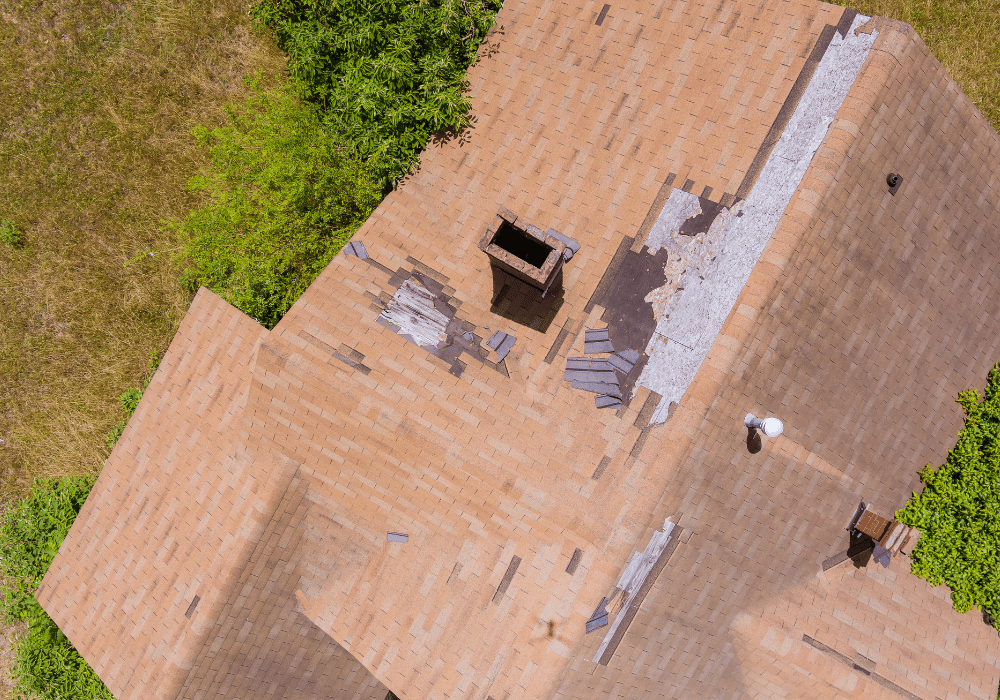
One of the most common indicators of wind damage is missing shingles. High winds can loosen or completely tear shingles off your roof, leaving vulnerable spots exposed. Here’s how to identify this problem effectively:
- Visual Inspection: Step back and examine your roof from the ground. Do you notice any patches where shingles seem to be missing? Broken patterns or bare roof decking are telltale signs.
- Debris Around the Property: Check for shingles scattered around your yard, gutters, or driveway; these could have been ripped off during the storm.
Missing shingles are more than just an eyesore. They can leave your roof vulnerable to leaks, water damage, and structural issues. Addressing them promptly helps maintain your roof’s integrity and prevents further complications.
Granule Loss
Granules are the tiny, sand-like particles on the surface of asphalt shingles. They protect your roof from UV damage and add an extra layer of waterproofing. Wind and hail can strip these granules, leaving parts of your roof exposed. Here’s what to look for:
- Gutter and Downspout Debris: Granules often wash away into your gutters or land near the base of downspouts after a storm. Take a quick look at these areas for small, dark particles.
- Bald Spots on Shingles: Missing granules can leave your roof shingles looking smooth or “bald” in places. If you can safely get a closer look, examine areas that appear lighter or discoloured for granule loss.
Granule loss compromises the protective capabilities of your shingles. Over time, this deterioration can lead to increased wear, reduced energy efficiency, and higher susceptibility to leaks.
Bent or Damaged Flashing
Flashing refers to the metal pieces installed around chimneys, skylights, vents, and other roof edges to divert water away. When winds get intense, they can loosen, bend, or damage these crucial components. Here’s how to spot flashing damage:
- Warps or Bends: Check for any parts of your roof where the metal appears warped, bent, or lifted.
- Missing Seals: Flashing often works hand-in-hand with caulking or seals. Spot any cracks or missing caulk around flashing, as these gaps can lead to leaks.
- Rust or Corrosion: Strong winds sometimes fast-track exposure to moisture, leading to signs of rust.
Damaged flashing compromises your roof’s ability to direct water away, increasing the risk of water infiltration and costly repairs.
Interior Leaks
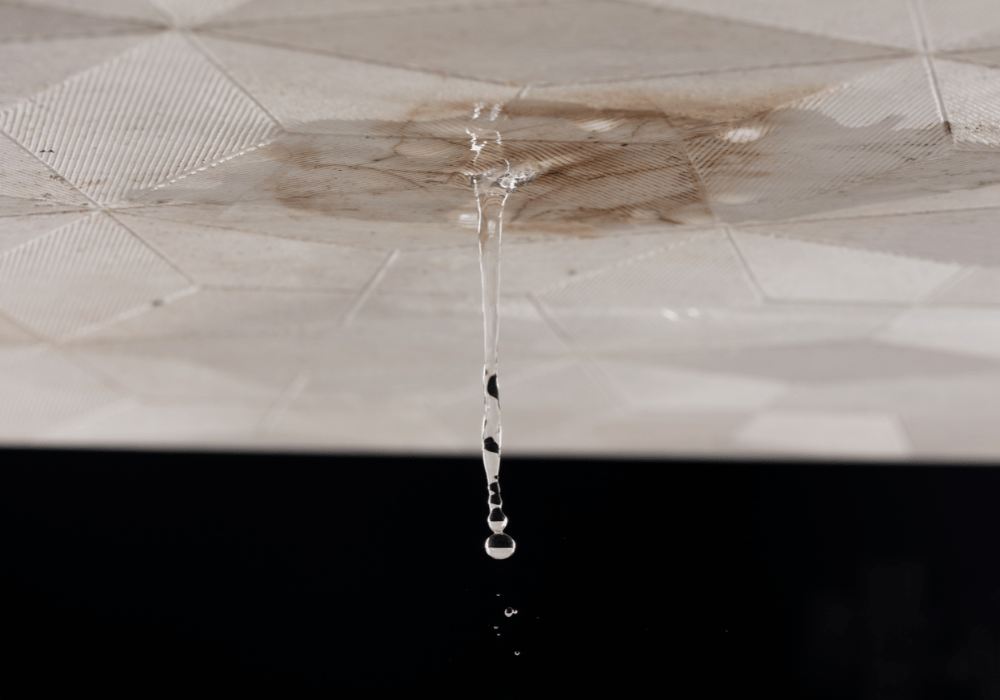
Not all signs of roof wind damage will be visible from the outside. If your roof has suffered structural damage, it may manifest in subtle ways inside your home. Look out for these interior clues:
- Water Stains: Yellow or brown rings on ceilings or walls are clear signs of water damage. These stains are often caused by leaks originating in your roof.
- Dripping Water: If you notice active drips during or after a storm, it’s time to inspect the roof immediately.
- Peeling Paint or Wallpaper: Excess moisture trapped in walls due to leaks can cause paint or wallpaper to bubble, crack, or peel away.
Interior leaks indicate that the roof’s protective barrier has been breached. Neglecting these signs can lead to widespread mould damage, rot, and weakened structural elements.
While you can address minor signs of roof damage yourself, significant issues caused by wind damage require expert attention. Climbing onto a roof can be both dangerous and ineffective for untrained individuals, so hiring a professional roofing contractor is always a smart choice.
A certified inspector will provide a thorough evaluation and recommend tailored solutions to keep your roof in peak condition. They can also help document damage for insurance purposes, ensuring you’re fully supported in the event of a claim.
How Roof Insurance Claims Work: A Step-by-Step Guide for Homeowners
Dealing with roof damage is never a pleasant experience. If you’ve recently faced a storm, fallen debris, or an unforeseen accident causing damage to your roof, one thing is likely on your mind: your insurance claim. Navigating the process of roof insurance claims may seem overwhelming, but understanding the steps involved can ease stress and ensure you’re fairly compensated.
This guide breaks down the process into actionable steps to help homeowners like you successfully handle roof insurance claims. Here’s what you need to know.
Continue readingThe Importance of Regular Roof Inspections and Maintenance
The roof is one of the most important parts of any building, shielding the interior from rain, wind, snow, and sunlight. Despite its vital purpose, the roof is often overlooked until noticeable problems arise. Regular roof inspections and maintenance are essential to preserve the integrity of the structure, enhance its longevity, and prevent costly repairs. This blog will explore why roof inspections are indispensable and provide insights into how routine maintenance can save you time and money while ensuring the safety of your property.
Why Are Regular Roof Inspections Important?
Early Problem Detection
Damage to a roof doesn’t occur overnight; it happens gradually over time due to wear and tear, severe weather conditions, or poor installation. However, not all damage is visible to the untrained eye. Small issues, like missing shingles, cracked tiles, or minor leaks, can go unnoticed initially but may escalate into much larger problems if not addressed. Regular roof inspections allow professionals to detect these issues early, minimizing the damage and avoiding significant expenses in the future.
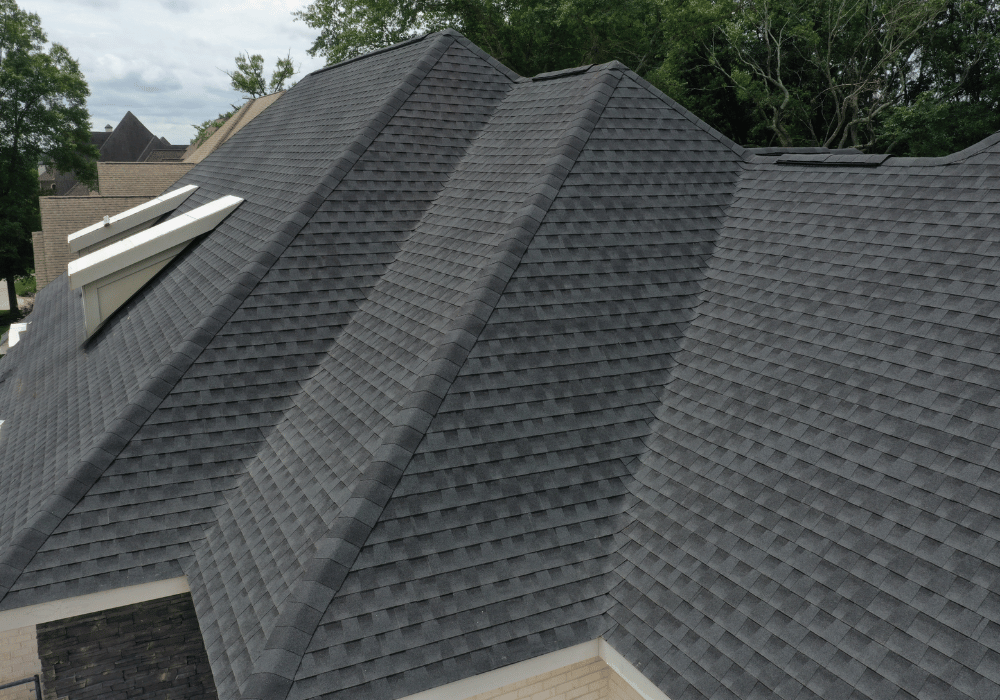
Prolonging Roof Lifespan
Every roof has an expected lifespan, but neglecting care and maintenance can cut that lifespan short. Regular inspections identify and address small problems that, if ignored, could drastically reduce the longevity of the roof. By staying proactive, property owners can extend the roof’s life and maximize their investment.
Preventing Structural Damage
A compromised roof can lead to water infiltration, which poses a serious threat to the structural integrity of your home or building. Over time, untreated roof leaks can damage insulation, walls, ceilings, and even the foundation of the property. Roof inspections help prevent such incidents by ensuring the roof’s waterproofing is intact and effective.
Ensuring Energy Efficiency
A properly maintained roof contributes significantly to the energy efficiency of a building. Damaged roofs can create gaps or allow moisture to seep in, which affects insulation and forces HVAC systems to work harder to maintain indoor temperatures. This results in higher energy bills. Regular inspections and maintenance ensure that the roof remains energy-efficient, keeping utility costs down.
Meeting Warranty Requirements
Many roofing manufacturers require proof of regular maintenance to uphold warranties. By scheduling routine inspections and keeping a detailed record of all maintenance activities, property owners can ensure that their warranty remains valid. This can be extremely helpful if unexpected issues arise during the warranty period.
Key Components of a Roof Inspection
When scheduling a professional roof inspection, it’s important to understand what it entails. Roofing contractors follow a thorough process to evaluate the overall health of your roof. A comprehensive roof inspection typically includes examining the following:
- Shingles or Roof Covering
Inspectors check for missing, loose, curled, or damaged shingles. They also look for signs of granule loss and general wear that may indicate aging or exposure to harsh weather.
- Flashing and Seals
Flashing and seals around vents, chimneys, and skylights are examined for cracks or deterioration. Proper sealing is essential to prevent water from entering the structure.
- Gutters and Drainage Systems
The effectiveness of gutters and downspouts is assessed to ensure there is no blockage or damage that could affect water drainage. Poor drainage can lead to water pooling on the roof.
- Signs of Moisture or Leaks
Water stains, mold, and mildew inside the attic or ceiling may indicate roof leaks. Inspectors use these signs to locate the source of water infiltration and recommend immediate repairs.
- Structural Integrity
The overall structure of the roof, including the decking, underlayment, and support system, is evaluated to ensure there are no weak or compromised areas.
- Ventilation
Proper roof ventilation helps regulate temperature and moisture levels in the attic. A lack of ventilation can cause issues like mold growth or ice dams during colder months.
The Benefits of Regular Roof Maintenance
Routine maintenance goes hand in hand with roof inspections. Both are crucial for preserving the longevity and performance of a roof. Here are some of the advantages of committing to regular roof maintenance:
Cost Savings
One of the most obvious advantages of proper maintenance is cost savings. Regular upkeep is far less expensive than emergency repairs or a complete roof replacement. Inspecting and addressing small issues, such as cleaning debris from gutters or replacing a few damaged shingles, prevents those issues from spiraling into major expenditures.
Enhancing Property Value
A well-maintained roof adds significant value to your property. Whether you plan to sell your home or lease a commercial space, buyers and tenants are far more likely to choose a building where the roof is in excellent condition. Taking care of your roof showcases your commitment to maintaining the property, which is a strong selling point.
Preventing Health Issues
A leaking roof can lead to mold and mildew growth, posing health risks to occupants, including respiratory problems and allergies. Regular maintenance ensures that leaks are promptly repaired, minimizing the chance of mold buildup.
Preparing for Extreme Weather
Hurricanes, snowstorms, and other extreme weather events can take a toll on roofs. Regular maintenance keeps your roof in top condition, ensuring it can withstand harsh weather with minimal damage.
Peace of Mind
Knowing that your roof is in excellent condition provides peace of mind. You can rest assured that your home or business is protected from the elements, freeing you from stress during heavy storms or unexpected weather changes.
How Often Should You Schedule Roof Inspections and Maintenance?
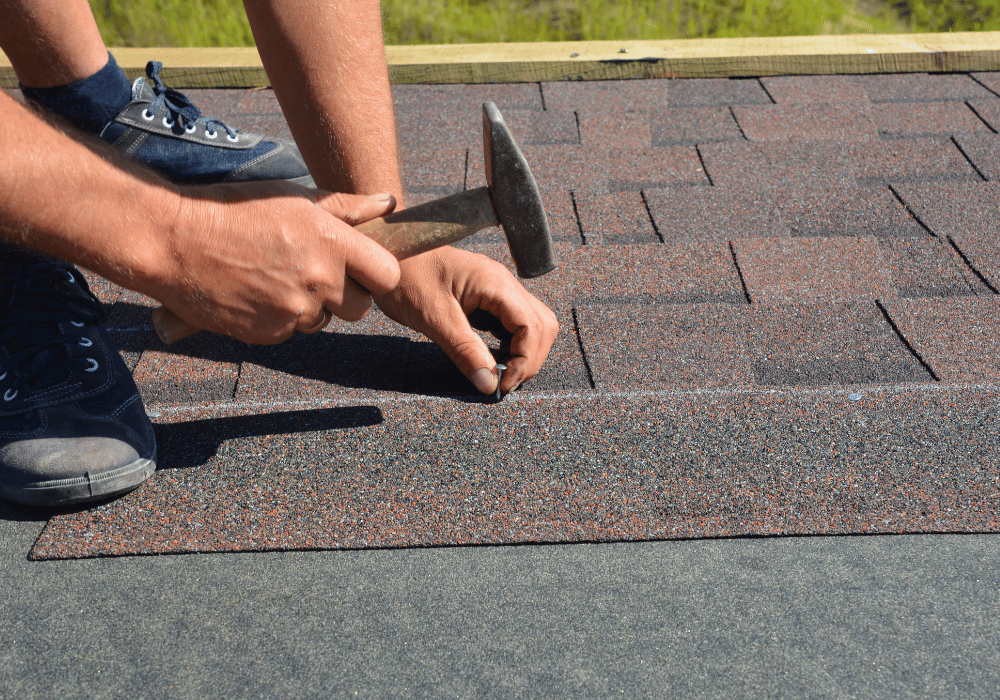
Roof inspections should typically be conducted twice a year — once in the spring and once in the fall. These periods are ideal because they precede and follow extreme weather seasons, allowing you to prepare for upcoming challenges and address any post-season issues.
Additionally, scheduling an inspection after major storms, heavy snowfall, or other severe weather events is highly recommended. For best results, have the inspections performed by a licensed and experienced roofing professional who knows what to look for and how to resolve potential issues effectively.
DIY Roof Maintenance Tips
While professional inspections and maintenance are crucial, property owners can take steps to care for their roof in between inspections:
- Keep Gutters Clear
Regularly clean gutters and downspouts to prevent blockages that could cause water to pool on the roof.
- Trim Overhanging Branches
Overhanging branches can damage shingles and increase the risk of debris accumulating on your roof. Trim any nearby trees to keep your roof clear.
- Inspect After Severe Weather
Check for visible signs of damage, such as missing shingles or cracked tiles, after storms or hail. Notify a roofing professional to assess the damage further.
- Remove Debris
Remove leaves, twigs, and other debris from the roof to prevent moisture buildup and the risk of mold or algae growth.
Trust the Experts for Your Roof’s Needs
Although DIY maintenance is helpful, it cannot replace the expertise of a professional roofing contractor. Experienced contractors have the tools, knowledge, and training to spot underlying issues that may not be readily apparent. They can provide tailored solutions to suit your roof’s specific needs, ensuring its durability and efficiency.
At Shockwave Roofing, we specialize in comprehensive roof inspections and maintenance services for residential and commercial properties in London, Ontario and surrounding areas. Our team of roofing professionals is dedicated to protecting your investment by extending the life of your roof
